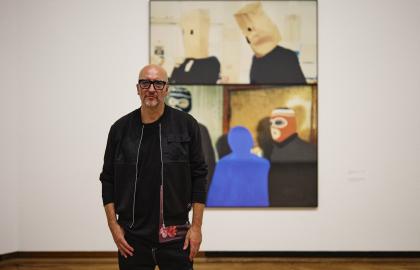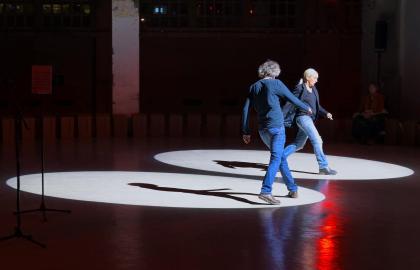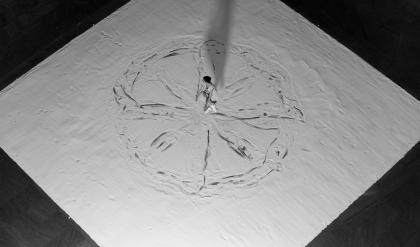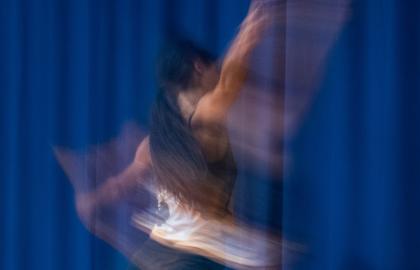John Baldessari was born to European immigrants. He grew up in a town on the Mexican border, in a state synonymous with film: California. This shaped his vision. In 1970, Baldessari incinerated all his artworks in a crematorium. He didn’t want to make ‘boring art’ and urged art students to follow suit. The former painter became a director and screenwriter of static images, often combined with language. Baldessari told unruly parables that couldn’t be reduced to a simple film plot. His increasingly boisterous art eventually burst out of the rectangular frame – and also out of the framework of what was then considered art. Baldessari was decades ahead of the image manipulation that floods our screens today.
In the mid-1960s, Steve Reich and Philip Glass invented a new musical genre: minimal music. Reich was bored of the atonal music of the time. He began working with collages, not of photographs but of voice and instrument recordings. He played two tape recorders slightly out of synch, creating a pulse – the ideal soundtrack to the hectic urban life of New York. His Violin Phase (1967) later inspired a young choreographer in Brussels. In the early 1980s, Anne Teresa De Keersmaeker playfully embodied its rhythmic shifts in a circular floor plan. To launch the season, Bozar presents her iconic solo in the Ravenstein Gallery rotunda, between the Centre for Fine Arts and Central Station.
Baldessari, Reich and De Keersmaeker have inspired countless artists, composers, and dancers. This season, I’m especially looking forward to Julia Wolfe’s musical portrait, which builds on minimal music, and choreographer Radouan Mriziga’s creation with the Belgian National Orchestra. Mriziga, working with an early composition by John Adams, brings together a performer, the orchestra’s string section, architecture, light, and the heartbeat of the city. Artists are making Brussels great, again and again!







